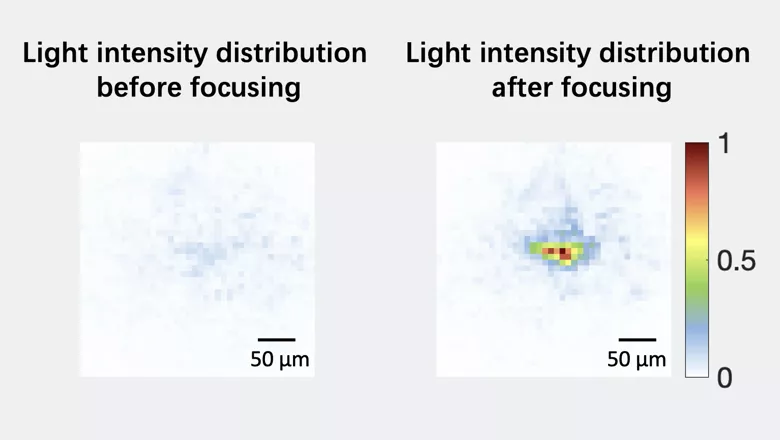Besides potential applications in life sciences, this method could also be useful in optical communications such as LiFi that transmits internet signals through light waves and autonomous vehicles such as visualising vehicles, cyclists or pedestrians behind an obstruction by providing non-line-of-sight information via light scattering.
Dr Wenfeng Xia
01 March 2021
Researchers file patent for new method to enhance endoscopy, minimally invasive surgery and optical communications
Wavefront shaping has emerged as a promising method to address this challenge by correcting the wavefront distortions induced by optical scattering of tissue during light propagation.

Researchers from the School of Biomedical Engineering & Imaging Sciences have filed a new patent for the development of a new method for wavefront shaping that is 3 orders of magnitude faster than any other photoacoustic-guided wavefront shaping methods currently reported.
In a paper published today in Optics Letters, the researchers show a simple and high-speed method which focuses light through an optical scattering medium that could potentially be used during surgery for biomedical endoscopy and other optical communication applications.
The ability to focus light through scattering media such as biological tissue has been a long-standing goal as it could enable various applications in life sciences such as laser microsurgery and manipulation with high surgical precision.
Wavefront shaping has emerged as a promising method to address this challenge by correcting the wavefront distortions induced by optical scattering of tissue during light propagation.
However, the speed of the focusing process is too slow to be applied in biological tissue.
Mr Tianrui Zhao a PhD student leading this research said the method is based on their previous work that demonstrated an approximate relationship between the light intensity at the input and output of a scattering medium with a real-valued intensity transmission matrix.
This had significantly reduced the complexity of the conventional light propagation model that considers scattering media as complex transmission matrices.
This method also benefits from a high-speed digital micromirror device that has nearly one million tiny mirrors that can be independently flipped at tens of thousands frames per second to modulate the wavefront of the incident light.
Moreover, this method also provides a non-invasive guidance for focusing as a feedback signal is generated by converting the light into ultrasound waves via the photoacoustic effect.
Supervisor Dr Wenfeng Xia said although the focusing speed is still too slow to be applied in in vivo applications, it is a solid step forward.
“We can say that with further improvement in speed, this method could be potentially useful for various optical imaging applications and laser microsurgery and manipulation with high surgical precision.,” he said.
